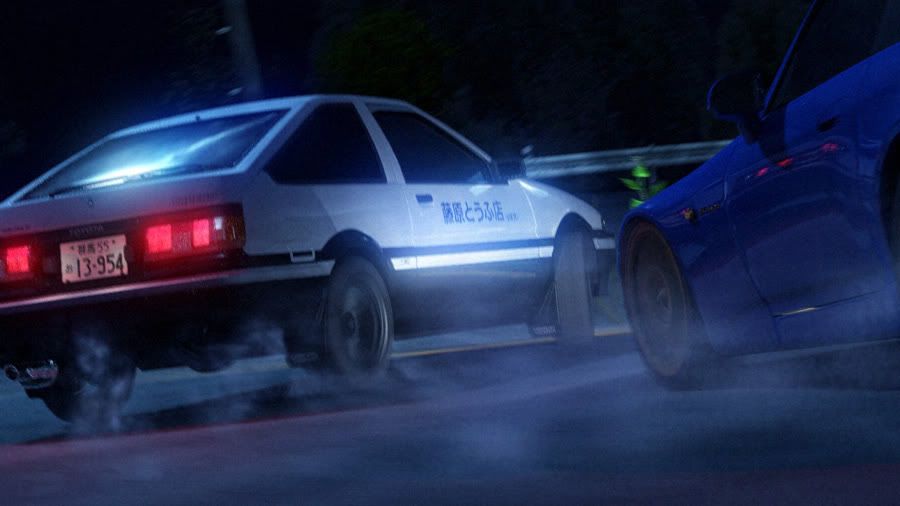
Game: Initial D Extreme Stage
Developer: Sega/Cavia
Publisher: Sega
Release Date: July 3rd, 2008
Genre: Racing
System: Playstation 3
This review will have two parts; one through the eyes of a gamer, and the other through the eyes of a car enthusiast. Keep in mind as you read this review that I have never read the manga or seen the anime. The franchise is not nicely received by people who are really into the scene in which the franchise represents, which is why I never bothered with it. Think of it as The Fast and the Furious movies, which are thought of as an abomination to the tuning culture by tuning purists. Anyway, let’s begin!
Upon starting the game on mode you are asked to choose if you're a male or female. After choosing your gender, you choose a name for yourself. You can do minor modifications to your character to make them look like you. If you're not Japanese, or even Asian, it may be a bit difficult to make your character look like you. Just skip this part by using defaults unless you really care how your character looks. After this, you are asked to choose a car.

The requisite makes are here. Honda, Toyota, Nissan, Subaru, Suzuki. Suzuki? Yeah, they had to add a Cappuccino in there for good measure. After you choose your car you create a license plate to your liking. All regions of Japan are available. After that you have to choose the classification number. All cars are classified by their size, weight, and engine displacement. If you don't' care about this, enter a random number. If you want to be realistic, then enter the correct number which the chosen car is classified under. After that you are to choose the hiragana identifier that goes to the left of the main identification number. Just don't choose a "RE" or a "WA" as those are designated for rental cars in real life. It's strange that "Y" isn't available. The "Y" is designated to US servicemen so that it's easier for the police to profile them. Next you choose the main 5-digit number for the license plate. Real plates in Japan have a maximum of 4 main numbers, but for the game's sake they made it 5. I guess they didn't want to be responsible for any liabilities if somebody's real plate is duplicated. In Japan, people take this very seriously. I just made my plate identical to the last car I owned while I lived in Japan. The car I chose to review and play this game is a black BNR32 Nissan Skyline GT-R since it is the only car in the game that I've owned in the past. I've owned an Impreza WRX, too, but not the STi version which is the only version of the Impreza in the game.
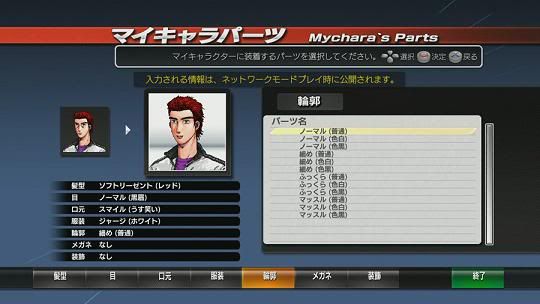
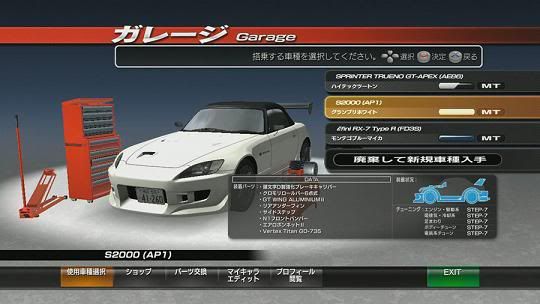
Instead of choosing which car you like the best, it may be better to choose the car whose handling you are most at ease with. Front-wheel drive cars have a lot of understeer, rear-wheel drive cars have oversteer, and all-wheel drive cars will have a lesser degree or oversteer (in this game).
There are 3 ways to play this game, Koudou Saisoku Densetsu (Directly translates to “Public Road’s Fastest Legend), which is the story mode, Time Attack, and Network (online multiplayer). Koudou Saisoku mode is the story mode of the game where you can choose who and where to battle. In the Time Attack mode, you race the clock and ghosts of your older track times. This is a good way to practice tracks while still earning points for car modification. Network mode is the online battle portion of the game.
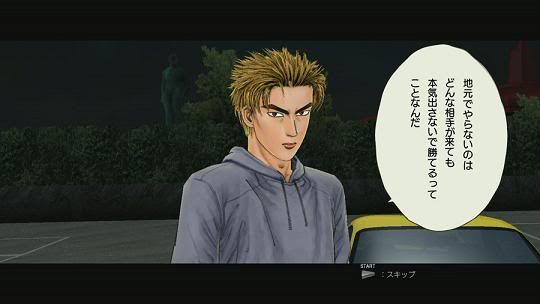
Other options include a Replay Mode where you can watch the battles you are most proud of, an option menu to adjust the game to your preferences, and the comic mode where you can read the Initial D manga. Of course, this is not free. You must purchase episodes/chapters from the Playstation Network Store.
So you play a stranger to the touge (TOW-GEH), which means 'mountain road'. You confront various characters from the Initial D franchise and they want to battle you to see if you are a worthy hashiriya. Most people meet you with arrogance which does get annoying after a while. Is he like that in the manga/anime? Before each battle the character taunts you and tells you how great they are. You are sometimes given the option to accept their offer, sometimes you are not. If you defeat them they are humbled (but still arrogant) and tell you that it's unbelievable that they lost. If they beat you they rub it in your face. The more mature characters rub it in your face but offer you useless advice on how to improve your skill on their home touge. It is important to know that people don’t talk like this in real life, so those of you studying Japanese…do not talk like this to people!
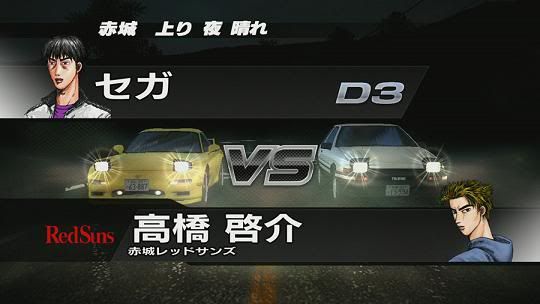
In this game, a “race” is defined as just beating your opponent to the finish line. Sounds easy enough, but know that in real life, touge racing does not work this way due to its extreme level of danger. Trying to overtake your opponent on the corners (while in mid-drift) is the milk and cookies of this game. Even during the loading screens, they teach you how to do this. Other than each track having their own level of difficulty and terrain traits, you race one-way uphill or downhill, rain or shine, and night or day. As you guessed it, downhill is at higher speeds, rain is more slippery, and night time is more difficult to see.
You are awarded points after each battle whether you win or lose. You get a variable amount of points for winning, and you get a flat rate of 1000 points if you lose. You use these points to upgrade you car's performance and appearance in the “Garage” portion. I usually skip the appearance modifications because they don't do anything to your car to help you win races. Keep in mind that these performance upgrades are barely noticeable before and after you install them in your car. In addition to points earned for car modification, you also earn facial attributes and clothing for your avatar.
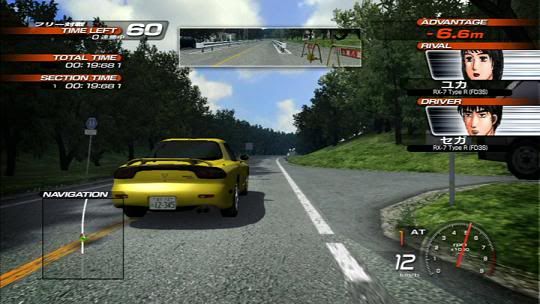
Each opponent has a set pattern to their driving style on each track. They will never change their style or pattern. Learn their patterns to gain an advantage. They slow down dramatically at the same points of the track (sometimes at straight-aways, which is strange), or they take some turns really wide to offer you a chance to pass, or they’ll pull some cheap moves as well. If you have trouble defeating a certain opponent, just know that their driving lines never change with each time you play. Learn their pattern and get the edge.

From the Car Enthusiast's Perspective
The game does offer some of the best cars Japan has offered in the past 25 years and they are presented with great detail, even down to the engine sounds. All of the cars' engine sounds are of the real thing. Upon selecting a car, you hear a sound sample of the car’s real engine sound. Choose a GD or GC chassis; you hear the rev of an EJ20 with a slight hint of the Boxer rumble. If you select an Evo, you hear that signature 4G63 purr. The same goes for the all of the selectable cars. Sometimes the best part of the race for me is at the starting line when you can rev up your engine. You can hear brand-specific blow-off valves as well. One forgivable omission is the sound of the engine doesn't change if you modify it.
If you're into cars, especially Japanese cars, then you'll find plenty of things about this game that do not make sense. A fully built, ported and polished, RB26DETT powering an R32 (and the R34) GT-R has the same 0-60 (0-100km/h) time as a fully stock EG6 SiR II with a measly B16A. Don't get me wrong, I have respect for the B-series because I've seen some pretty mean builds on a B-series, but in reality a fully built B-series is no match for a fully built RB26 if attached to chassis’ they were intended for. This is just one example of some inconsistencies. Some are bigger than others, but all are noticeable. Again, this game is not meant to be realistic. It is based on a comic book, so there are comic book elements with doses of realism. One funny and intentional omission from this game is the R33 GT-R. This car is the bane of the GT-R lineage and should be ignored accordingly, and the authors know this.
I've experienced this culture for many years in real life when I lived in Sendai City in Miyagi Prefecture. The game does have sort of a grit to it and somewhat captures the feel of the touge scene. There are crews that are rivals as well as allies. Most people, including me, were in crews. Like in the game, crews from other turfs would come (peacefully) asking to battle locals. To beat someone in their own turf is the goal, and I have seen people ruin their lives to achieve this (pouring all their money into a car while they have mouths to feed, getting deep in debt). There is a lot of pride out there in those mountains at night, and this game tries to show this aspect of the touge culture. As mentioned earlier, in real touge racing, you do not overtake your opponent. This is very dangerous on narrow, twisty roads going at high speeds. You race single file. If you are leading and can evade your opponent, you win. If he stays on your ass the entire length of the race, he/she wins. Yes, there are girls up there who race.
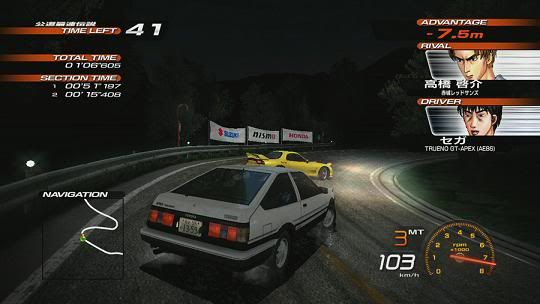
The Verdict: 6.5/10
Aside from big liberties Sega took when making this game (and other Initial D titles), the game is fun if you're able to ignore huge discrepancies in the performance of specific cars. Once you get into the rhythm of each of the tracks and patterns of the opponents, especially the more difficult ones, it becomes fairly easier. The game starts off great, but spirals down into repetitiveness. Perhaps if I knew more about the franchise, it would be more enjoyable. But even if that were so, I think only seeing the characters interact with a new character (you) would be the only interesting thing. Outside of the story, it's a generic arcade racer with not much depth.
The controls are very slippery. More slippery than Initial D Special Stage for PS2. I know it was designed that way to make it easier to drift, but I think they may have gone too far with it. The steering adjustments almost make no difference. If the controls were like Auto Modellista, I think the game would be more enjoyable. To make matters worse, you are not given the option to use the D-pad to control the car, which is what I usually prefer in most racing games other than the standard gaming wheel.
The AI can be very frustratingly cheap at times. The voice acting is something to balk at, so if you don’t understand a single word they are saying, consider it a blessing. Luckily the cut scenes can be skipped. The graphics of the cars and the road itself are great, but background scenery details and spectators are PS2, maybe PSP, quality. You can see a lot of big pixels which is something you don't see a lot of in a PS3 game. At times it looks like Initial D Special Stage for PS2.
The game requires a bit of “grinding” to get to higher levels so you can beat more difficult opponents. You will have to battle a lot of the same opponents repeatedly so that you can gain points. This adds a bit of length to the game since there aren't too many opponents, but it does get repetitive. The long load times don’t make this much easier. One good thing is that the weather and day conditions change if you return to a defeated opponent. I guess they knew you had to grind and didn't want the player to get too bored.
I used to play the arcade version a lot, but the fun of the arcade version was to battle friends in an arcade setting, this feeling is completely lost when taken home. If you play online, but that depends on how lucky you are to find someone playing this game with whom you can get a decent ping. When I first bought this game, finding online battles was a little easier. Now, nobody is playing this game online.
The game can be easily found, but if you really want it, try not pay more than $30.00 for it shipped. Any price above that and the game’s worth comes into question. Unless you are a big fan of the franchise, there are cheaper alternatives out there such as GRID. Initial D is an average arcade racer riding on the fame of the franchise, but nothing to write home about. It only sold well because it is an Initial D product. If the name were to be changed to, for example, “Kaido Battle 4”, I doubt it would be as popular as it is.
No pirates or emus! My copy.

If you are curious about our touge, here are some details:
The green dot is the start point of the downhill, the end point of the uphill. The red dot is the start point of the uphill, and the end point of the downhill. The blue circle is the gathering point. It is no Akina, but it was very challenging, especially the downhill.

Here is a street view of the gathering spot, you can see the skid marks everywhere.
http://maps.google.com/maps?hl=en&ie=UT ... 38581&z=15
Here is my old car (R32 GTR) at the gathering spot with my friend, Toshi’s, car. A BNR34 GT-R.

Another touge buddy, Hiroshi, and I. His white Onevia is powered by a fully built 380RWHP SR20DET.
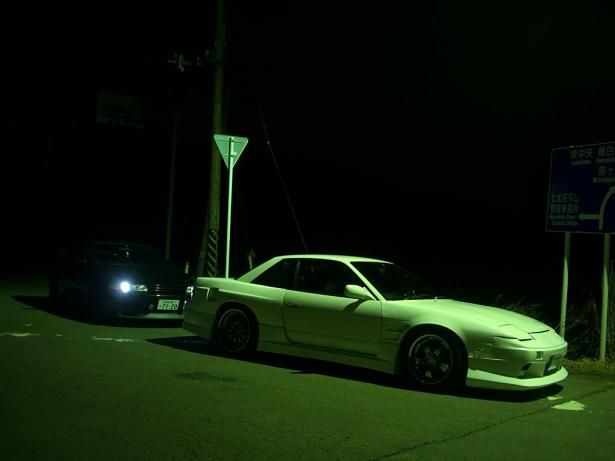

Awesome! what happened to your GT-R?
ReplyDeleteI sold it for a Y34 Nissan Gloria. :)
Delete